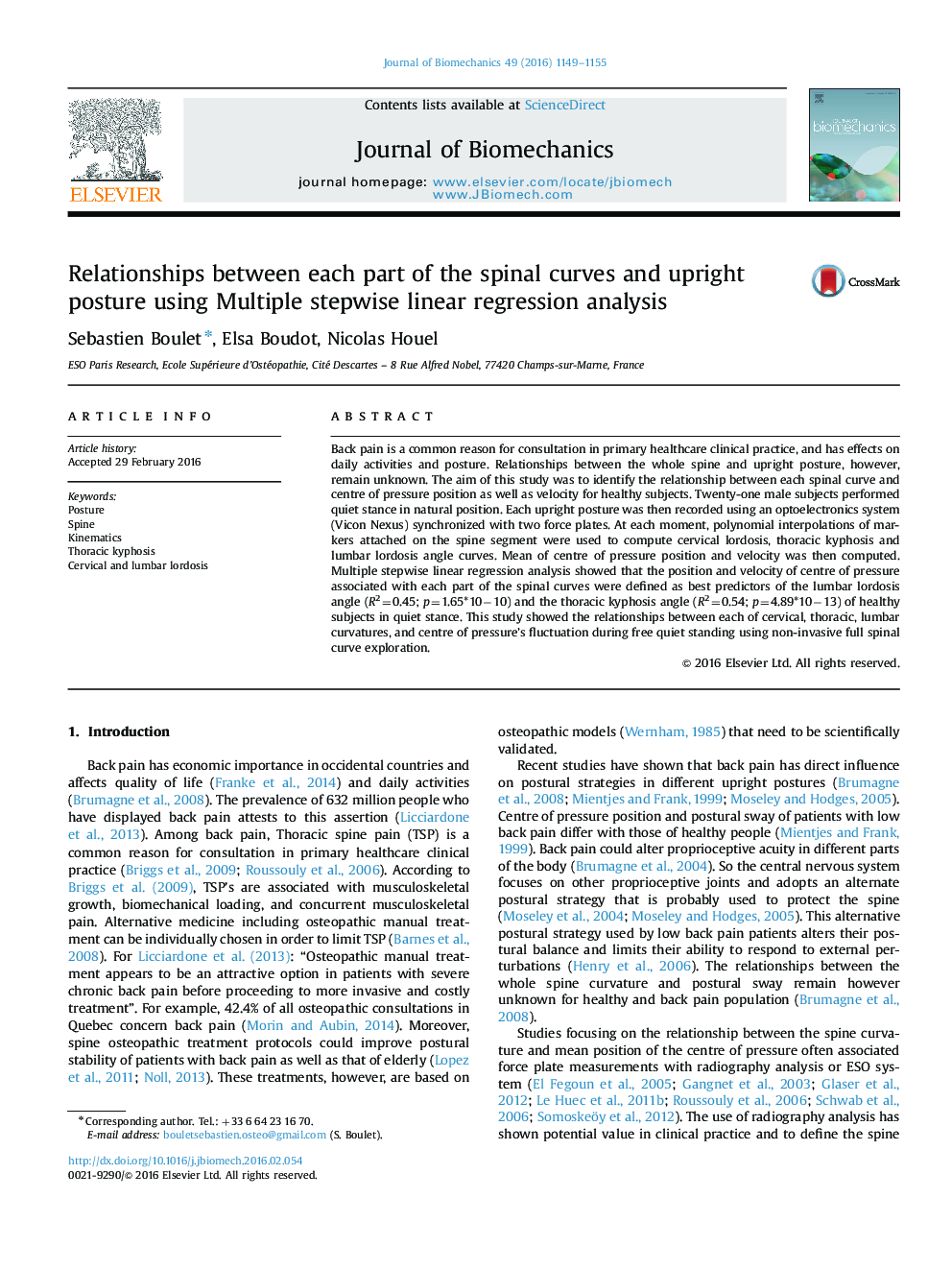| Article ID | Journal | Published Year | Pages | File Type |
|---|---|---|---|---|
| 871833 | Journal of Biomechanics | 2016 | 7 Pages |
Back pain is a common reason for consultation in primary healthcare clinical practice, and has effects on daily activities and posture. Relationships between the whole spine and upright posture, however, remain unknown. The aim of this study was to identify the relationship between each spinal curve and centre of pressure position as well as velocity for healthy subjects. Twenty-one male subjects performed quiet stance in natural position. Each upright posture was then recorded using an optoelectronics system (Vicon Nexus) synchronized with two force plates. At each moment, polynomial interpolations of markers attached on the spine segment were used to compute cervical lordosis, thoracic kyphosis and lumbar lordosis angle curves. Mean of centre of pressure position and velocity was then computed. Multiple stepwise linear regression analysis showed that the position and velocity of centre of pressure associated with each part of the spinal curves were defined as best predictors of the lumbar lordosis angle (R2=0.45; p=1.65*10−10) and the thoracic kyphosis angle (R2=0.54; p=4.89*10−13) of healthy subjects in quiet stance. This study showed the relationships between each of cervical, thoracic, lumbar curvatures, and centre of pressure’s fluctuation during free quiet standing using non-invasive full spinal curve exploration.
